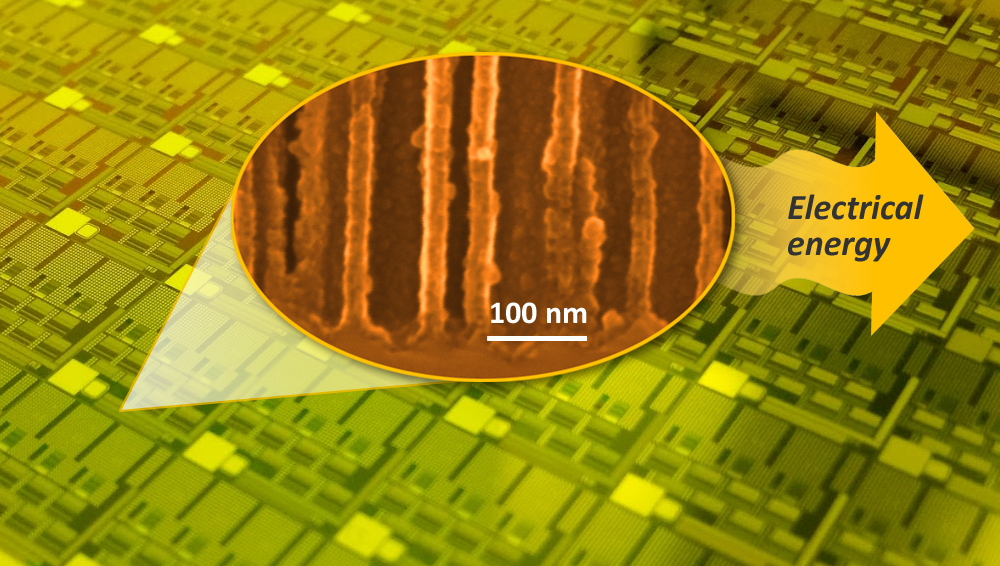A micro-supercapacitor can be integrated into a microcircuit chip for future IoT devices
If you’re wondering why it matters that researchers have created a novel energy inside a microcircuit chip with their newly developed efficient nanomaterial-based integrated energy storage, think about powering the Internet of Things (IoT).
Creating a miniaturized form of energy storage with high energy and power density opens up new possibilities for integrated mobile devices and paves the way for zero-power autonomous devices that are needed in the IoT world.
A team from VTT Technical Research Centre of Finland developed an extremely efficient small-size energy storage, or a micro-supercapacitor, which can be integrated directly inside a silicon microcircuit chip. The miniaturized energy storage relies on the new hybrid nanomaterial developed recently at VTT.

Supercapacitors resemble electrochemical batteries, but differ in the way they store energy. In contrast to mobile phones’ lithium ion batteries, which utilize chemical reactions to store energy, supercapacitors store mainly electrostatic energy that is bound at the interface between liquid and solid electrodes.
Supercapacitors are similar to batteries in that they have a variety of uses: from small electronic gadgets to the large energy storage needed in electric vehicles.
The energy and power density of a supercapacitor depends on the surface area and conductivity of the solid electrodes. The VTT researchers developed a hybrid nanomaterial electrode, which consists of porous silicon coated with a titanium nitride layer, just a few nanometers thick, by atomic layer deposition (ALD). This approach creates a large conductive surface in a small volume. The team also included ionic liquid in a micro channel formed in between two hybrid electrodes which resulted in extremely small and efficient energy storage.
This marks the first time that a silicon based micro-supercapacitor can compete with the leading carbon and graphene based devices in power, energy and durability.
Micro-supercapacitors can be integrated directly with active microelectronic devices to store electrical energy generated by different thermal, light and vibration energy harvesters and to supply the electrical energy when needed. This is an important quality for autonomous sensor networks, wearable electronics and mobile electronics of the IoT.
The researchers then integrated the new nanomaterial micro-supercapacitor energy storage directly inside a silicon chip. Their demonstration of an in-chip supercapacitor technology enabled energy storage up to 0.2 joule and power generation of 2 watts on a one square centimeter silicon chip.
At the same time, this method leaves the surface of the chip available for active integrated microcircuits and sensors.
The group is currently seeking a partner interested in commercializing the technique.


Comments are closed, but trackbacks and pingbacks are open.